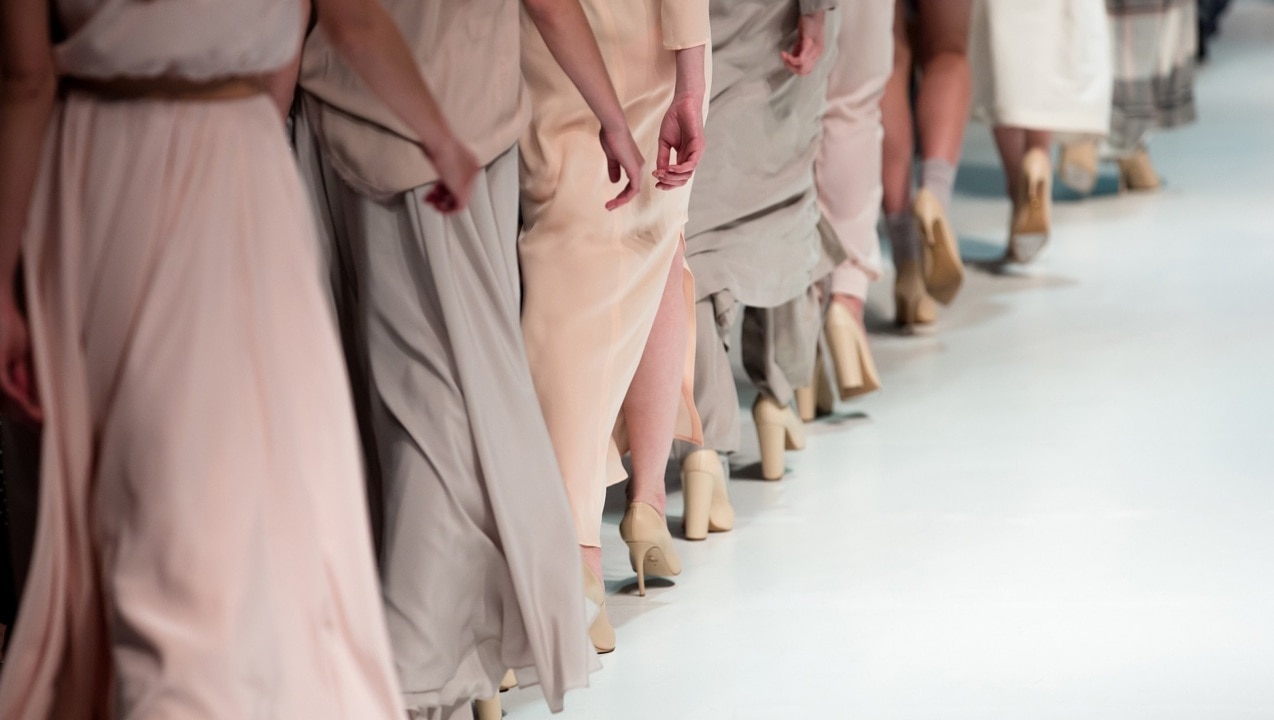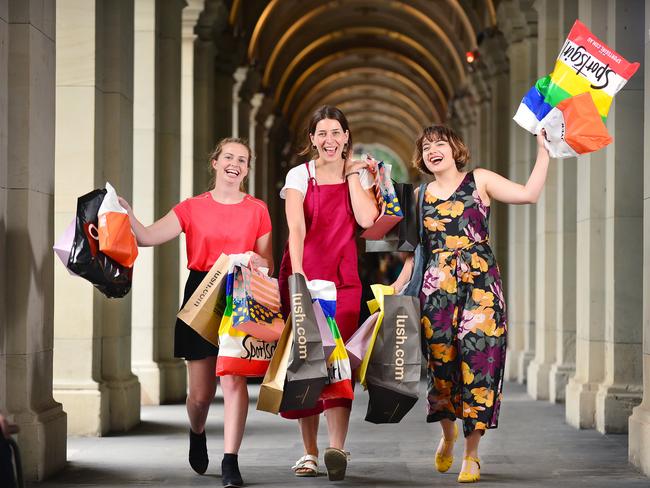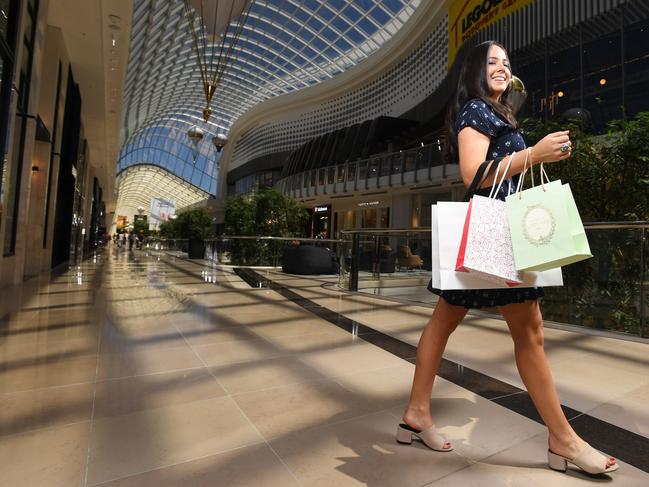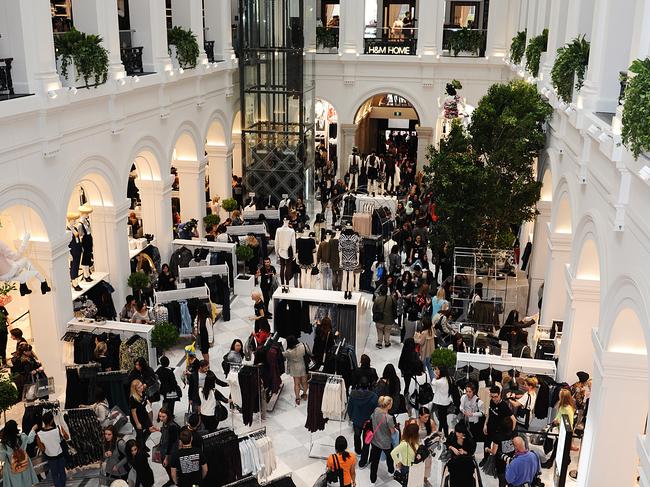International fast fashion interlopers making life hard for Aussie outlets
While Australia’s fashion retailers have been thrown into chaos by coronavirus, the sector was already going through a separate transformation, just before the virus reached our shores, writes John Dagge.

Business
Don't miss out on the headlines from Business. Followed categories will be added to My News.
The nation’s three main fast-fashion invaders — H&M, Zara and Uniqlo — broke through the $1 billion mark in annual sales for the first time just before the coronavirus pandemic up-ended the retail sector.
The milestone came less than a decade after Zara spearheaded a global fast-fashion incursion that has dramatically redrawn the nation’s retail landscape.
A review of sales figures also shows Target, Big W, and Myer have been among key losers from the arrival of the global apparel giants that churn out on-trend designs — harvested from catwalks and celebrity Instagram accounts — in record time and volume.
The $1 billion sales milestone was hit before COVID-19 forced major retail chains to close hundreds of stores and stand down tens of thousands of workers.

While the sales figures are now well and truly historic, they highlight the success the three global titans have found in Australia, adding to the pressure local retailers will face when they and their overseas-based rivals look to shift their businesses out of a deep hibernation.
“Their (fast-fashion) supply chain enables them to turn things over very quickly and be very responsive to trends,” Deakin Business School senior lecturer Alvin Lee told Business Daily.
“If strawberries is the print of the season, these companies can, in a couple of weeks, get those designs sewn and sent to shops.”
While Zara, owned by Spanish fashion conglomerate Inditex, was the first fast-fashion titan to enter Australia, key rival Hennes & Mauritz, which trades as H&M, has taken the biggest bite.
The latest financial report lodged by its Australian arm shows sales rose 9.5 per cent to a record high of $385.7 million for the year to November.
H&M opened its first Australian store in April 2014, in Melbourne’s heritage GPO building (pictured). It now has a network of 49 stores, including those under its premium fashion label, COS.
The Swedish clothing powerhouse also posted its first profit here in 2016 — a milestone reached just two years after it touched down in Australia and one that came despite the costs of rapidly expanding its network.
Its latest accounts show it made a net loss of $1.1 million for the year to November, although that came as it repaid $9.2 million on a $163.3 million loan its Swedish parent granted to set up the business here.

Japanese rival Uniqlo, owned by Tokyo-listed Fast Retailing, also made its Australian launch in April 2014, opening its first store at Melbourne’s Emporium shopping centre.
The chain, which has won over shoppers by providing affordable basics, now has a network of 20 outlets.
Latest accounts show sales rose 26 per cent to $306.2 million for the year to August.
Along with a slower store rollout, Uniqlo has also tracked a more modest path to profit, posting its first year in the black in 2018, four years after its launch here.
The original fast-fashion invader, Zara, opened its first Australian store on Sydney’s Pitt St in April 2011. It has since built a network covering 20 sites.
Its most recent accounts cover the year to January 2019. They show it lifted sales by 10.5 per cent to $311.8 million during that period.
While its full-year 2019 performance is not yet known, the brand has generated double-digit sales growth every year since it first opened its doors to Australian shoppers.
Its upcoming accounts will cover the year to January 2020 — a period before the coronavirus pandemic had prompted large sections of the economy to shut down.
All up, H&M, Zara and Uniqlo generated slightly more than $1 billion ($1.004 billion) in Australian sales across their most recently published reporting periods.

The milestone came amid a period of mass upheaval for legacy Australian retailers even before coronavirus hit.
Brands including Harris Scarfe, Dimmeys, Bardot, Jeanswest, Colette by Colette Hayman and Roger David have either collapsed or undergone major restructures — closing stores and slashing jobs — over the past three years.
Others in that group include Ed Harris, Marcs, David Lawrence, Herringbone, Rhodes & Beckett, Shoes of Prey, Payless Shoes and Oroton.
An analysis of sales figures shows Target and Big W have suffered the biggest drop in sales since the fast-fashion invasion started in 2011, although their decline also coincides with the rise of Kmart and significant growth in online shopping.
Target is now taking in $970 million less, as full-year sales have plunged 26 per cent from $3.78 billion in the 2010-2011 financial year to $2.81 billion the past financial year. Annual sales at Big W, owned by Woolworths, have dropped 9 per cent over the same period, from $4.16 billion to $3.79 billion.

Full-year sales at struggling department store chain Myer are down 5 per cent, from $3.16 billion to $2.99 billion.
All up, the trio of retailers has lost $1.56 billion in annual sales since Zara opened its Pitt St store.
The drop comes despite the nation’s population rising by 3.2 million and annual spending on clothing and footwear climbing from $19.1 billion to $25.9 billion, figures from the Australian Bureau of Statistics show.
Not all of the nation’s traditional retail destinations had lost ground.
Sales at Kmart surged 45 per cent — or a whopping $1.86 billion — since 2010-2011 to now clock in at $5.86 billion a year.
Just Jeans, owned by retail billionaire Solomon Lew’s Premier Investments, also fared better than most, with its sales rising 14.4 per cent to $241.9 million, albeit while sales at sister chain Jay Jays fell by 22 per cent to $168.7 million.
“Retailers which have continued to innovate have found success,” Dr Lee said.
